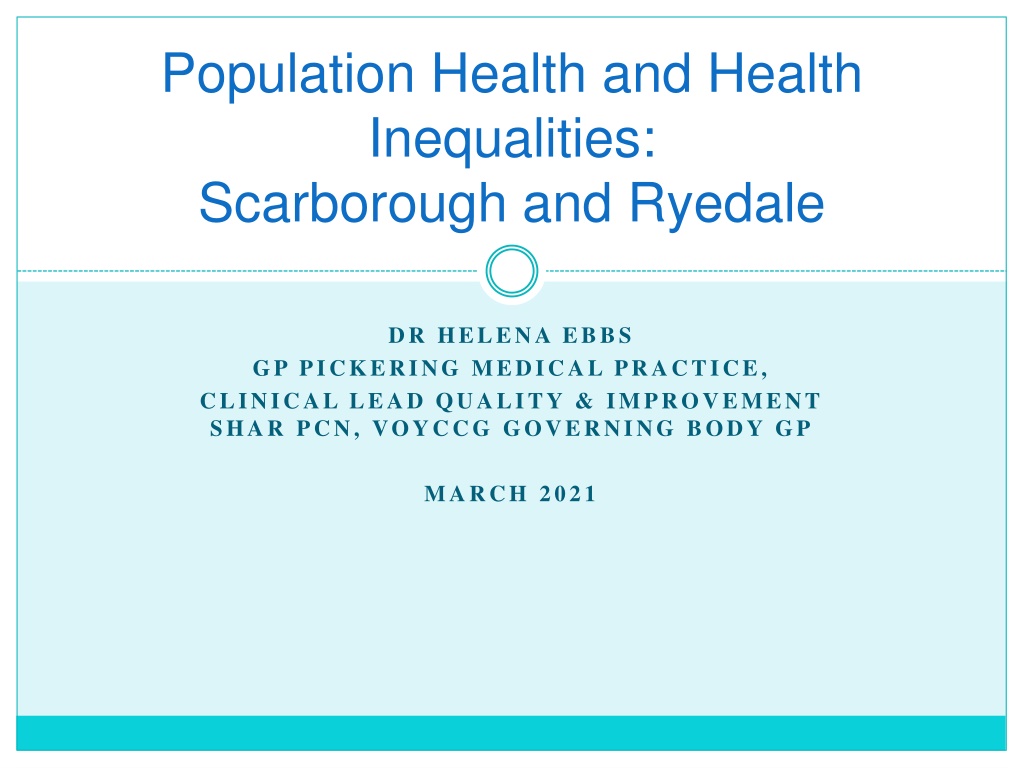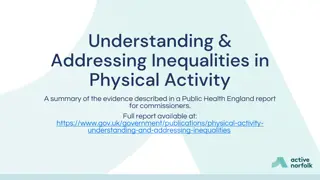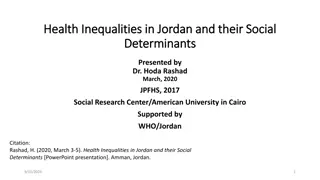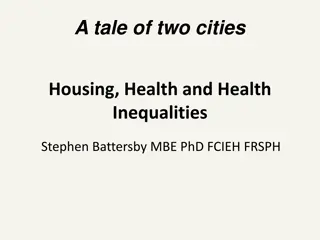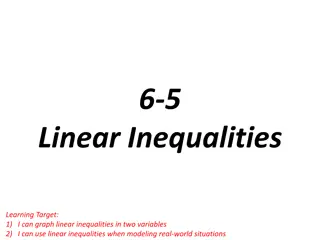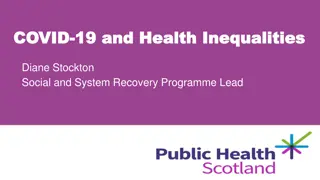Understanding Health Inequalities in Scarborough and Ryedale
Population health and health inequalities in Scarborough and Ryedale are examined, highlighting factors such as life expectancy, deprivation levels, employment, multimorbidity, and access to care. The unique challenges faced by urban and rural areas in North Yorkshire are discussed, emphasizing the importance of addressing specific population health needs to reduce disparities.
Download Presentation

Please find below an Image/Link to download the presentation.
The content on the website is provided AS IS for your information and personal use only. It may not be sold, licensed, or shared on other websites without obtaining consent from the author. Download presentation by click this link. If you encounter any issues during the download, it is possible that the publisher has removed the file from their server.
E N D
Presentation Transcript
Population Health and Health Inequalities: Scarborough and Ryedale DR HELENA EBBS GP PICKERING MEDICAL PRACTICE, CLINICAL LEAD QUALITY & IMPROVEMENT SHAR PCN, VOYCCG GOVERNING BODY GP MARCH 2021
Population Health Population Health is an approach that aims to improve physical and mental health outcomes, promote wellbeing and reduce health inequalities across an entire population. This includes focusing on the wider determinants of health which have a significant impact as only 20% of a person s health outcomes are attributed to the ability to access good quality health care and the crucial role of communities and local people. NHSE https://www.england.nhs.uk/integratedcare/phm/
Health inequalities Health inequalities arise from a complex interaction of many factors - housing, income, education, social isolation, disability - all of which are strongly affected by one's economic and social status Marmot review 2010
What are we trying to achieve? To improve the care of those experiencing the greatest health inequalities, fastest.
How does this translate in North Yorkshire 3 broadly defined population groups: - Large urban, lower than average levels of deprivation e.g. York, Harrogate - Dispersed, rural areas with small market towns e.g. Ryedale, Hambleton - Urban areas with significant deprivation e.g. Scarborough, Selby, Catterick The population health needs of these areas are not the same.
Scarborough: population health factors Lower than average life expectancy- ripple effect 17 out of 23 North Yorks LSOAs in the lowest 20% deprivation in UK Employment Covid effect on tourism Significant multimorbidity Smoking rates Alcohol Housing
Ryedale: population health factors Rurality/isolation Highest frailty/cancer/dementia burden per capita Most elderly population in NY Poor transport 20% significant poverty High fuel poverty in most rural areas Lack of access to domiciliary/residential care Distance= delay 6% covid related unemployment https://www.nuffieldtrust.org.uk/research/rural-remote- and-at-risk
Suspected Parkinsons in Scarborough 72 yr old man, lives alone Retired ill health 57 Smoker 50 yrs+ Multi-morbidity: 5 other chronic diseases Poor housing Low income Family carers: daughter who has young children herself How does this man s health inequalities affect his ability to access health care and manage his health?
Suspected Parkinsons in Ryedale 92 yr old moderately frail Lives with elderly wife, also frail No digital access or mobile signal No public transport links Coal-fired central heating (back boiler) Family carers live at a distance How does this man s health inequalities affect his ability to access health care and manage his health?
Consider: How do we factor in population health needs and reduce health inequalities by designing our services in a better way?
Dementia: the conundrum of the pathway NICE guidance: CT scan should be complete prior to diagnosis of dementia What population health factors are influencing diagnosis? - Rurality - No feasible transport - Lack of a carer - Frailty - Poverty How do we mitigate and reduce the impact of health inequalities?
Introducing a Care Coordinator and MDT Highlight those with health inequalities at MDT: predict and plan for dissent Create off-pathway diagnostic methods for patients who can t or choose not to follow the pathway designed. Support and enhance the assessment approach for those with greater inequality
Dementia: outcomes SHaR PCN Increase in dementia prevalence from 333 people in May 2019 to 443 in January 2021. Increased from 51% predicted prevalence to 64% (against a regional average drop of ~5% )
Other areas Cancer care coordination Frailty care coordination Parkinson s disease community CNS MH-FCPs: place based mental health workers from TEWV First contact physios: chronic pain & MSK access
What services could be designed differently: With health inequalities in mind? With regional variation: same standards, different delivery model How do we ensure population health intelligence informs all service design?
